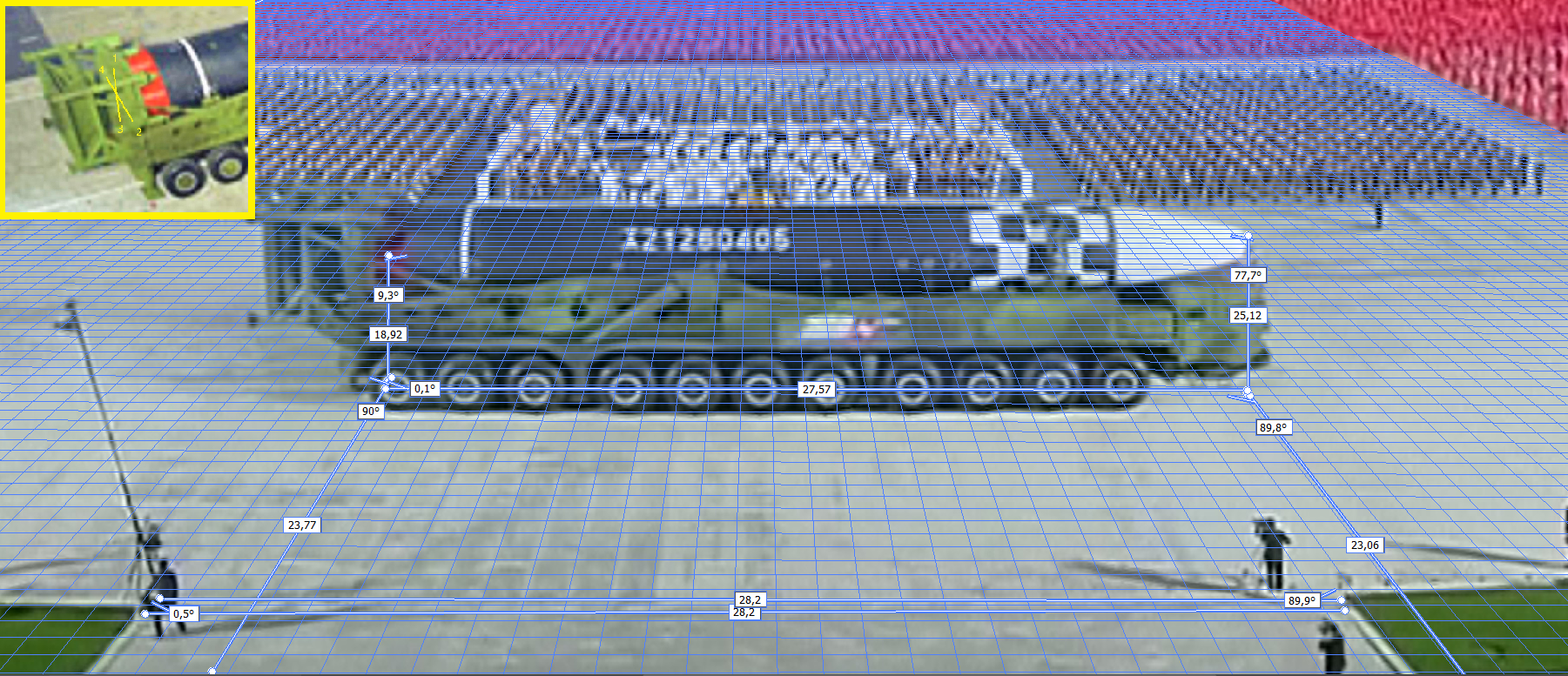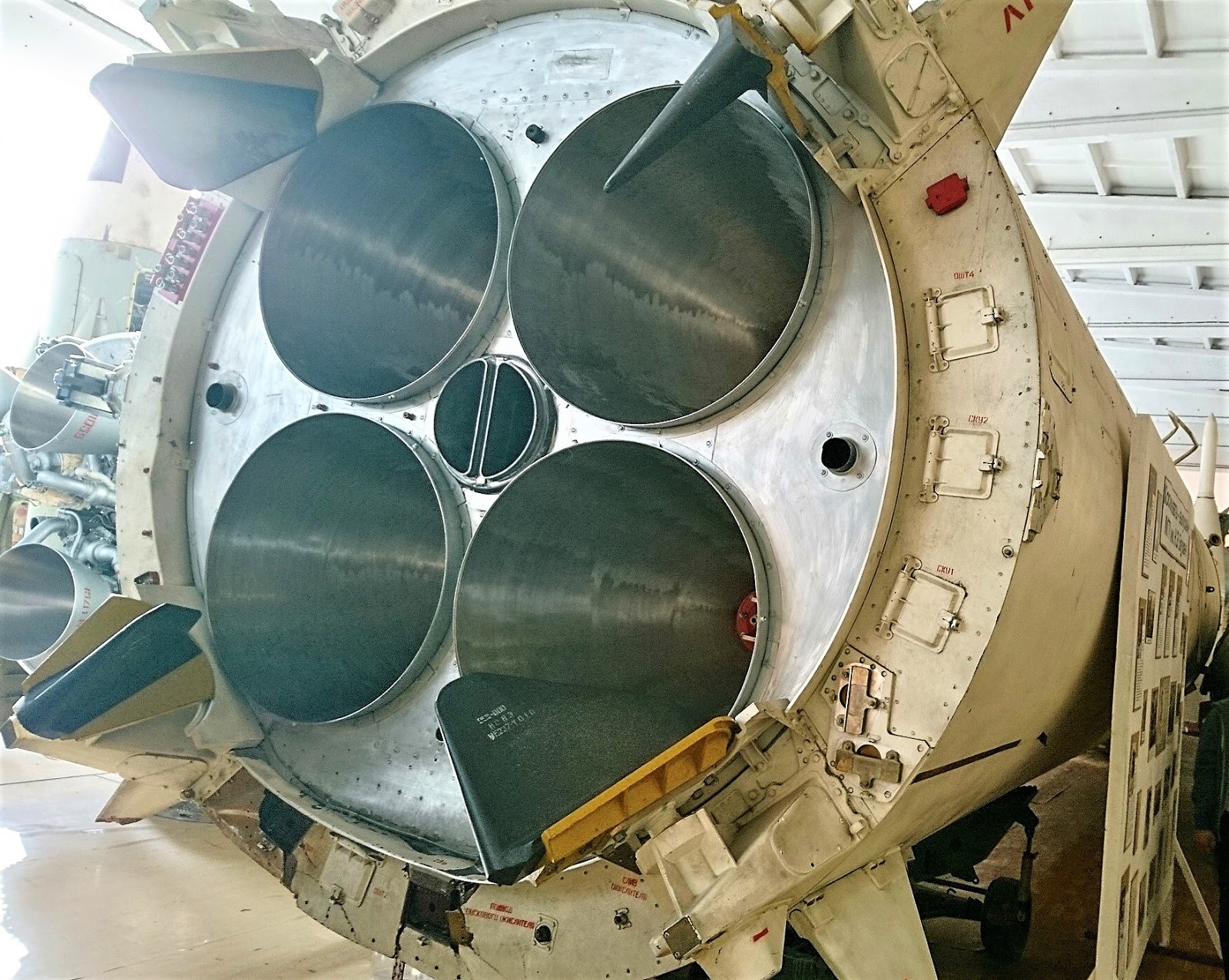
* The article was originally published on ONN's Datayo platform.
Key Assessments
-
North Korea's military parade in honour of the anniversary of the founding of the Worker' Party of Korea (WPK) is a regular event held every 5 years. The parade held on 10 October 2020 does not indicate increased risk or conflict.
-
North Korea unveiled a new liquid-fueled two-stage intercontinental ballistic missile (ICBM), measuring over 25 m in length and ~2.6 m in diameter. North Korea has not announced its official name.
-
The new ICBM does not represent a major breakthrough in technology, but rather the ability to continue to scale up the size of its existing missiles.
-
North Korea has a long history of illicitly importing vehicles and vehicle components and adapting them for launching missiles. North Korea is known to have imported six WS51200 in 2010, and to have subsequently converted them into transporter-erector-launchers (TELs). That the parade included eight large heavy-duty vehicles suggests three likely possibilities: (1) that the DPRK continues to import vehicle components like chassis, engines and transmissions despite increased sanctions and export control enforcement; (2) that the DPRK can now indigenously produce vehicle components; or (3) that the DPRK imported more than six WS51200 or its components.
-
Since North Korea's Hwasong-15 can already target all of the US mainland with a single nuclear warhead, the much larger size of the new ICBM likely represents a potential for delivering a single heavier, high-yield thermonuclear warhead or multiple nuclear warheads, in either case equipped with penetration aids to overwhelm or defeat US ballistic missile defenses.
-
Since the new ICBMs have many of the same signatures as the Hwasong-15, their size will not increase the difficulty of tracking the movements of the missiles using remote sensing.
-
Because the US may perceive this ICBM as a relatively greater risk to the US mainland and relatively easier to track, the US may seek preemptive or "left of launch" options to neutralize the ICBM before launch. This dynamic increases the risk of war on the Korean Peninsula.
Overview and Context of the Parade
On 10 October 2020, the Democratic People's Republic of Korea (DPRK or North Korea) celebrated the 75th anniversary of the founding of its Workers' Party of Korea (WPK), the ruling party of the DPRK. Chairman Kim Jong Un is the leader of the WPK. The DPRK typically holds a military parade every five years on the anniversary of the WPK's founding. Thus, the most recent parade should not be perceived as an indicator of increased risk or conflict. The DPRK's military parades are often expensive and lavish. This year was no exception, despite several natural disasters hitting the DPRK in 2020 including COVID-19 (and the simultaneous drop in trade due to border closures) and severe flooding.
The DPRK uses military parades to demonstrate military and economic power to domestic and foreign audiences. Historically, North Korea has used these parades to demonstrate functional deployed missile systems as well as mock-ups of systems that may not be ready for deployment, but are under consideration for development. While some analysts have gone so far as to call these "fakes", they should not be dismissed out of hand, as these mock-ups often represent design considerations that will later be adopted.
ICBM Description and Measurements
The new missile appears to be a large, two stage, liquid propellant rocket of intercontinental range. At the Fifth Plenary Meeting of the 7th Central Committee of the WPK, which took place in late December 2019, Kim Jong Un promised that the DPRK would possess a "new strategic weapon" in the near future. [1] This new ICBM is likely what he was promising. The new missile is likely powered by a pair of dual-chamber engines, while the Hwasong-15 is estimated to be powered by one dual-chamber engine, which has a lift-off thrust of roughly 80 tf. [2] The DPRK has existing engines that could serve as the new missile's second stage. For example, the second stage could utilize a single engine, as the one used in the Hwasong-12, or an engine or engines from the second stage of the Hwasong-15.

In order to compare the sizes of the missiles, ONN superimposed the image of the new missile (with red border) transparently over the image of two Hwasong-15 ICBMs. The two shots are taken with almost the same angle. However, this process is only meant to make a general comparison of the two systems. [3] Images source: KCTV
ONN used satellite and ground images to measure the missile's length and diameter. ONN and the Stimson Center's 38 North measured the distance between the two grassy patches at the bottom of the photo below as 26 meters using a 22 July 2020 optical satellite image with 50 cm resolution from Maxar. This reference allows ONN to estimate the missile's length as slightly over 26 m in length and the diameter as ~2.6 m. It should be noted that there is a slight conical taper to the second stage of the missile. [4] ONN’s diameter measurement refers only to the first stage of the missile. ONN did not take the wide-angle lens of the photo into consideration, meaning lens angle distortion, as well as the limitations of satellite imagery resolution among other factors, could contribute to a margin of error. [5]

Using images of the parade to make measurements of the missile's length and diameter based on ground references which are also measurable in satellite imagery. Small photo in the left corner: red protective cover seems to show the contour of four engine nozzles; source: KCNA. Large photo: Spatial measurements by ONN, source: KCTV.
Although the engines of the new ICBM were not shown during the parade, the approximate size and configuration of the first stage suggest a general similarity to the Soviet R-26 ICBM. The R-26 first stage is powered by two dual-chamber engines that provide a thrust of ~180 ton of force in a vacuum. [6] It is worth noting that the new DPRK missile has a skirt section, with a bottom slightly wider than the first stage body. Thus, gimballing (moving the nozzles to control flight path) coud be applied to direct the new rocket.
The engine or engines used in the second stage of the DPRK's new ICBM are unknown at this time. The DPRK may test these engines during a ground engine test, military missile launch or civilian space launch. ONN will monitor future launches and add more information about the size and capability of these engines as it becomes available.

R-26 ICBM in the demonstration hall of the Bauman Moscow State Technical University in Orevo, Moscow region. Source: ONN
Vulnerability of the New ICBM
North Korea moves its road-mobile missiles around on trucks to make it difficult for adversaries to know where they are. One key question is whether the DPRK moves the missiles while fueled. There are no precedents demonstrating the transportation of a missile of that size which is already fueled. [7] If it is not transported already fueled, this means that the missile must stand on an outdoor launch pad for hours to be fuelled before launch, making it vulnerable to an adversary's preemptive strike. [8] In addition, the convoy of fuel and personnel trucks that accompany unfueled missiles as they are transported make such a missile easier to track.
Options for Payloads
There are two possible payloads for this ICBM: multiple nuclear warheads or a heavy, single thermonuclear warhead. Both options could be accompanied by penetration aids to confuse US missile defenses. The new ICBM could possibly carry three or more warheads (a multiple reentry vehicle or MRV). The introduction of a mechanism (sometimes referred to as a "bus") for independently directing each warhead (a multiple independent reentry vehicle or MIRV) would increase the weight and add more complexity to the guidance system. A large single thermonuclear warhead would use less fissile material than MRVs or MIRVs, and could produce a significantly higher yield. [9] However, MIRVs have the advantage of being able to target multiple cities simultaneously and, like MRVs, increasing the chance of penetrating missile defenses. Neither strategy has been announced by the DPRK, nor is there evidence available that the DPRK has pursued either option; these are only described as possibilities for the payloads. ONN will continue to monitor developments.
ICBM Trucks
For the first time, the DPRK displayed very large 11-axle transporter-erector-launchers (TELs), used to carry the new ICBMs. It is unknown whether the DPRK developed the new TELs indigenously, or alternatively, imported either heavy vehicles or key equipment and components to convert or assemble them into TELs.
The DPRK previously used foreign-sourced heavy vehicles as TELs for intermediate-range ballistic missiles and ICBMs, specifically the 8-axle WS51200 trucks. The WS51200 TELs appeared for the first time during a military parade on 15 April 2012 bearing a Hwasong-13. The vehicle was subsequently used multiple times in parades and during launch set ups. [10] In 2017, vehicles with a 9th axle were displayed carrying the Hwasong-15.

Left: Hwasong-13's first appearance during a military parade on a WS51200 adapted into a TEL. Right: Hwasong-15 on a WS51200 TEL further modified with a 9th axle. Sources: KCNA
To produce the latest 11-axle TELs displayed during the military parade on 10 October 2020, the DPRK could have significantly modified the vehicles and components already in its inventory, particularly if the DPRK imported more than six WS51200 trucks or components for them. [11]
The main design challenge in producing TELs is the complicated chassis and steering system which involves not only complex manufacturing, but a computer supported design to allow the driver to effectively steer some of the axles, while the remaining axles are still responsive to off-road terrain challenges (e.g., a rock that only 3 out of 11 of the right wheels roll over). Based on the limited information available in the parade video, it is likely that the first three axles of the new TEL are powered much the same as the WS51200 TELs.
In addition to the elaborate chassis, North Korea would have had to have imported or indigenously produced powerful engines and transmissions. The illicitly imported 8-axle WS51200 contained American Cummins KTTA19 C700 diesel engines and German ZF Friedrichshafen WSK440 + 16S251 automatic transmissions. [12]
Since the DPRK's first nuclear test in 2006, sanctions on the DPRK have been steadily increased and export control regimes have been tightened to prevent the export of dual-use items such as heavy duty vehicle components. Nonetheless, it is not possible to rule out that the DPRK was able to procure enough supply early on, or perhaps even continue to import such components. Another explanation is that DPRK engineers, who have shown themselves to be quite capable and have had opportunities to study the WS51200 vehicles for over nine years, might have produced the vehicles indigenously. ONN will continue to monitor heavy duty-vehicle facilities in the DPRK and trade networks abroad.
Security and Policy Impact
The DPRK's new ICBM has several security implications. The larger size of the missile means that it has several constraints in its strategic value to the DPRK. The fact that it is yet another liquid-fueled missile, means that the US and its allies can continue to monitor its transportation using optical satellite imagery, synthetic aperture radar and other aerial reconnaissance means to track the associated signatures of a large convoy of fuel and personnel trucks with which such missiles must be transported. It is plausible that a crane may travel with the convoy to assist in the erection of the new ICBM as well. The size and the turning radius of the truck will provide clues as to where the missile can and cannot travel easily. There is no open source information about the engine or transmission of the new truck; however, the weight of the missile will place constraints on road gradient on which the truck could travel.
This missile could represent an interest on the part of the DPRK to develop the capability to deliver a single heavy thermonuclear device or multiple nuclear warheads with penetration aids to overwhelm or defeat US missile defense. It is likely the thrust of this missile could support either option, though little information is available until the DPRK tests the new ICBM.
The combination of the new ICBM being both threatening to the US mainland and it being easier to track and identify makes this new weapon destabilizing. The US may seek to preemptively strike the missile before launch. Such plans have already been discussed widely under the expression "left of launch." [13]
[1] Report on 5th Plenary Meeting of 7th C.C., WPK, KCNA, 1 January 2020
[2] Kim Jong Un Guides Ground Jet Test of New-type High-Power Engine, KCNA, 20 September 2016
[3] Technique originally applied by Jeffery Lewis, North Korea's new ICBM is much larger than the Hwasong-15 ICBM (~2 m in diameter). Here are two stills from the parade that help illustrate the difference, 10 October 2020, available at: https://twitter.com/ArmsControlWonk/status/1314948838797447168?s=20
[4] Jeffery Lewis, The upper stage of the new DPRK ICBM is ... very slightly conical. If you are trying to measure the diameter, this is a complication, 11 October 2020, available at: https://twitter.com/ArmsControlWonk/status/1315321390698958848?s=20
[5] A similar approach was used by Marco Langbroek in North Korea's October ICBM surprise, SatTrackCam Leiden (b)log, 12 October 2020, available at: https://sattrackcam.blogspot.com/2020/10/north-koreas-october-icbm-surprise.html. However, Dr. Langbroek used Google Earth for his reference measurement.
[6] Vacuum thrust. See: Asif. A. Siddiqi, Rocket Engines from the Glushko Design Bureau: 1946-2000, The British Interplanetary Society, Vol 54, 2001
[7] There is circumstantial evidence, however, to suggest that the DPRK may be able to do this for smaller ICBMs as the DPRK previously published a photo in which a Hwasong-14 was being fueled horizontally. Photo available at: https://www.voakorea.com/korea/korea-politics/5120642#&gid=1&pid=1. Some Soviet missiles were pre-fueled in factories and then transported to silos.
[8] For comparison, it takes two to three hours to launch the single stage Chinese DF-3 ballistic missile, which is smaller than the new DPRK design. See: John Wilson Lewis and Hua Di, China's Ballistic Missile Programs, International Security, Fall 1992
[9] See: Jing Fuqian, Chen Junxiang, Hua Xinsheng, 揭开核武器的神秘面纱 [Unveiling the Secrets of Nuclear Weapons], Tsinghua University Press, 2006, Beijing
[10] The United Nations, S/2013/337. For additional information on the how the original trucks were procured and adapted see: Melissa Hanham, North Korea's Procurement Network Strikes Again: Examining How Chinese Missile Hardware Ended Up in Pyongyang, Nuclear Threat Initiative, 31 July 2012, available at: https://www.nti.org/analysis/articles/north-koreas-procurement-network-strikes-again-examining-how-chinese-missile-hardware-ended-pyongyang/; Jeffery Lewis, Melissa Hanham, Amber Lee, That Ain't My Truck: Where North Korea Assembled Its Chinese Transporter-Erector-Launchers, 38 North, 3 February 2014, available at: https://www.38north.org/2014/02/jlewis020314/
[11] A total of eight large heavy-duty trucks appeared in the 10 October 2020 parade, surpassing the number of six WS51200 vehicles documented by the UN Panel of Experts (see footnote 10 above).
[12] WS51200, Hubei Sanjiang Space Wanshan Special Vehicle Co. Ltd, www.wstech.com.cn (No longer accessible)
[13] Report to Congress: Declaratory Policy, Concept of Operations, and Employment Guidelines for Left-of-Launch Capability, US Department of Defense, 10 May 2017, released in: Spencer Ackerman, Revealed: Pentagon Push to Hack Nuke Missiles Before They Launch, The Daily Beast, 22 May 2018, available at: https://www.thedailybeast.com/revealed-pentagon-push-to-hack-nuke-missiles-before-they-launch